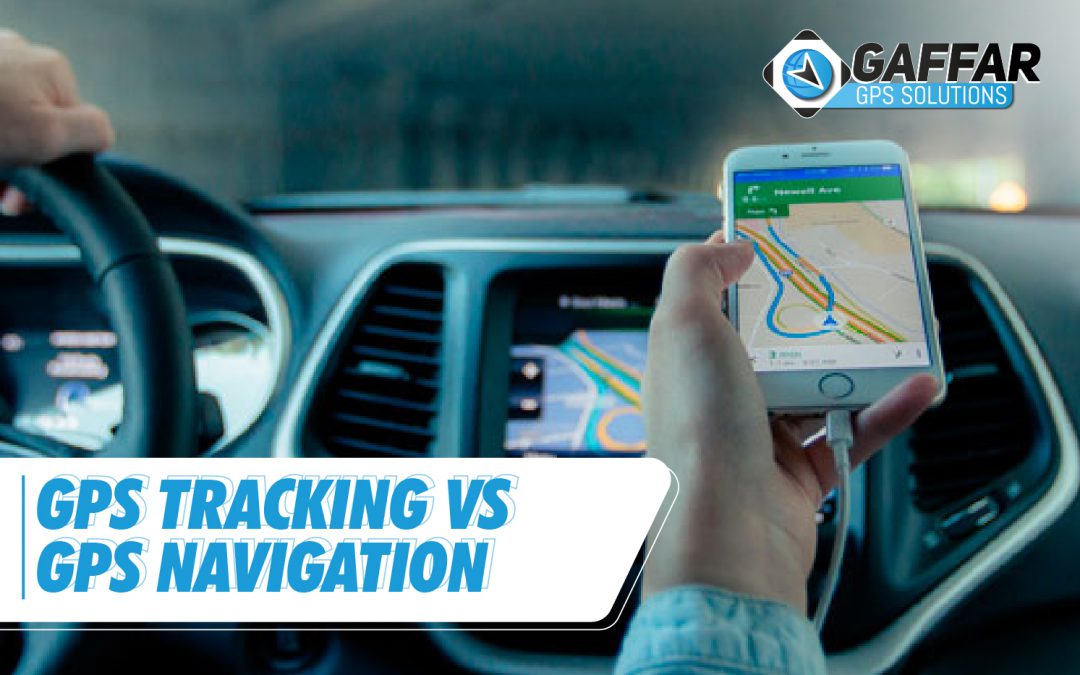A common assumption people make when they hear the term “GPS” is that GPS tracking and GPS navigation are the same things. While both use Global Positioning Satellites, the two activities are different as are the devices and services. So, what exactly is the difference between GPS tracking and GPS navigation? Let’s look at each of them individually.
GPS tracking, which is utilizing satellite information to record one’s course of travel is a very different aspect that GPS navigation, which is using satellite information to determine a course of direction. One involves information in the past tense of what already occurred, and one is dealing with information of what could be in terms of travel to come. To put it in very simple terms, GPS navigation tells you where you are and how to get to a destination whilst GPS tracking will show you where someone else is and where they have been. Understanding the difference between the two is essential to interpret GPS information correctly and what it can do for your vehicle.
The Purpose of a GPS Navigation Device
When people talk about GPS navigation, what they usually mean is using an app, a device or built-in navigation system to find your way or give you directions so you can get to where you want to go without getting lost. These apps and devices receive information from GPS satellites based on information you input such as an address or landmark that you’re trying to get to.
They also might use cellular towers or Wi-Fi signals to help the app or device know where you are so it can plot an accurate route or get information to you about the distance from where you are to where you’re going as well as information on road conditions, traffic, and if there are any accidents or other emergencies along the route.
The easiest difference to remember about GPS navigation is that it’s meant to send and receive information between the GPS satellite system and a driver or individual who is in the same location as the app or device being used so they can find another location.
GPS technology in general involves satellites sending data to a receiver. That component sits in whatever device the person is using to get location information. When presented in a visual format, the location information per satellite measurement is displayed visually on a computerized map of the location. With that graphical display a person can either see where they need to go to get to destination or where they have been.
The Purpose of a GPS Tracking Device
A GPS Tracking Device is a commonplace technology today that can be found in hand-held devices, on smartphones and inside vehicles. Because GPS relies on the triangulation from multiple satellites, it tends to be highly accurate when used correctly. And it becomes very convenient versus trying to interpret position and direction from a paper map.
When we talk about GPS tracking, we mean a device that receives information from GPS satellites and then sends information to someone who is as far as hundreds of miles away from the device. The device can be hardwired as part of the vehicle or it can be as tiny as a sim card and hidden. The information display can be another piece of equipment at an office, or it can be an app on a manager’s smartphone.
GPS tracking is mainly used to keep track of where something or someone is. It can also be used to monitor the health of something like a vehicle such as its fuel consumption or if it’s not where it’s supposed to be. GPS tracking can be used to keep track an entire fleet of trucks, to track the whereabouts of cargo, or to track and find pets, kids, and dementia patients who have wandered outside of a set area.
GPS tracking can serve a lot more functions than a GPS navigation app or device can, and a GPS tracking service provides a lot more than just maps for navigation. GPS tracking can monitor safety, send out maintenance reminders, and help businesses improve timekeeping.
Which is Better? GPS Tracking or GPS Navigation
The beauty of GPS is that it works in just about any location where a clear signal can be obtained. No surprise, GPS tools have become standard for all types of consumers traveling, whether it’s just hobbyists or professionals needing to keep track of where they are versus going. But the question lies: Which is better? Our take on it? Well GPS tracking has been integrated with multiple aspects of life, from tracking deliveries and routing shipping supplies to confirming where people are when they are being tracked by law enforcement as part of a criminal penalty. However, as the consumer market entered the picture, the GPS navigation side of things took off significantly, and now GPS destination mapping has become just as much a desired benefit as knowing where one has been. What used to be primarily the equipment of a ship navigator or archaeologist is now used by parents finding a soccer field for a weekend kids’ game and campers looking back on how far they hiked in a national park trail area.
GPS navigation or “personal navigation” is not tracking. It’s a navigation tool that replaces paper maps and a compass that helps individuals find where they are and find their way from their location to another one. It cannot be used to track another person from afar.


Recent Comments